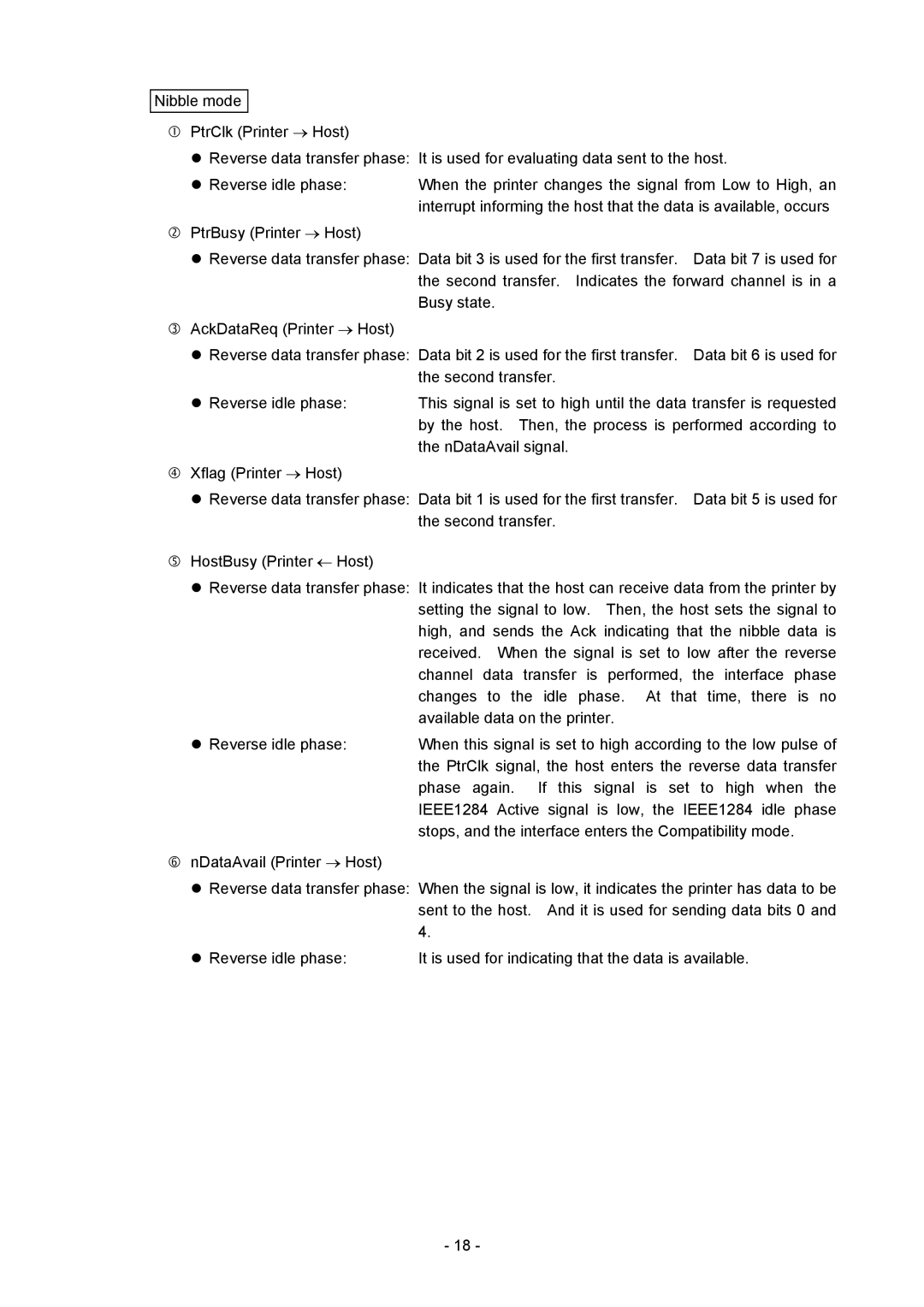Nibble mode
cPtrClk (Printer → Host)
zReverse data transfer phase: It is used for evaluating data sent to the host.
z Reverse idle phase: | When the printer changes the signal from Low to High, an |
| interrupt informing the host that the data is available, occurs |
dPtrBusy (Printer → Host)
z Reverse data transfer phase: Data bit 3 is used for the first transfer. Data bit 7 is used for
the second transfer. Indicates the forward channel is in a Busy state.
eAckDataReq (Printer → Host)
z Reverse data transfer phase: Data bit 2 is used for the first transfer. Data bit 6 is used for
| the second transfer. |
z Reverse idle phase: | This signal is set to high until the data transfer is requested |
| by the host. Then, the process is performed according to |
| the nDataAvail signal. |
fXflag (Printer → Host)
z Reverse data transfer phase: Data bit 1 is used for the first transfer. Data bit 5 is used for
the second transfer.
gHostBusy (Printer ← Host)
z Reverse data transfer phase: It indicates that the host can receive data from the printer by
setting the signal to low. Then, the host sets the signal to high, and sends the Ack indicating that the nibble data is received. When the signal is set to low after the reverse channel data transfer is performed, the interface phase changes to the idle phase. At that time, there is no available data on the printer.
z Reverse idle phase: | When this signal is set to high according to the low pulse of |
| the PtrClk signal, the host enters the reverse data transfer |
| phase again. If this signal is set to high when the |
| IEEE1284 Active signal is low, the IEEE1284 idle phase |
| stops, and the interface enters the Compatibility mode. |
hnDataAvail (Printer → Host)
z Reverse data transfer phase: When the signal is low, it indicates the printer has data to be
sent to the host. And it is used for sending data bits 0 and 4.
z Reverse idle phase: | It is used for indicating that the data is available. |
- 18 -
